Homemade Gnudi! (Part 1)
Sometimes the things I cook are inspired by something I find in a recipe book. Sometimes, they’re inspired by an ingredient. Sometimes, it’s both!
April Bloomfield, chef at the Michelin Starred restaurants The Spotted Pig and The Breslin in NYC, recently put out an amazing book called A Girl and Her Pig, and she outlines her procedure for gnudi inside.
Gnudi are dumplings, kind of a hybrid of gnocchi and ravioli. It’s rumored that the name “gnudi” came from the fact that each dumpling is like a nude ravioli. And that’s important to remember as you follow the recipe.
The ingredient that inspired me to make these was a beautiful, rich ricotta from Maplebrook (locally available, from nearby Vermont).
The actually recipe is very easy, and can be found on Serious Eats. When you want to make these, you need to start them three days ahead, and you need to make sure your ricotta will not spoil within those three days.
As far as ingredients, all you need to remember is 1 pound of semolina flour, 1 pound of ricotta, 1 oz of grated cheese (I freshly grated Moliterno, a sheeps milk cheese akin to Fiore di Sardinia), and 1 teaspoon of salt. 1:1:1:1. You also need a piping bag (or whatever you’d use to pipe stuff out) and kitchen shears (or clean scissors).
Just mix everything except the semolina together in a big bowl.
Spread about half of the semolina onto a parchment lined baking sheet and pipe the ricotta mixture along the tray over the semolina.
Use the kitchen shears to snip the ricotta mixture every 1.5 inches or so.
Next, you pick up each dumpling and sprinkle some of the remaining semolina over it as you flatten it into a rounded disc. As April instructs, you want smooth gnudi, not dimpled ones. Lay them all out onto the semolina and then spread the remaining semolina over the whole lot.
The idea is that you want to dry out the ricotta as much as possible over the next few days. You’re going to turn the gnudi in the semolina once a day so that the semolina has a chance to draw out as much moisture from the ricotta, and this will create a light shell of semolina housing the ricotta. (Clearly, this isn’t going to work with watery ricotta.)
So that’s pretty much all there is to making the gnudi. It’s really easy up to this point. Cooking them is the challenge.
I decided to make a local mushroom cream sauce to have with my gnudi.
That recipe is coming soon!
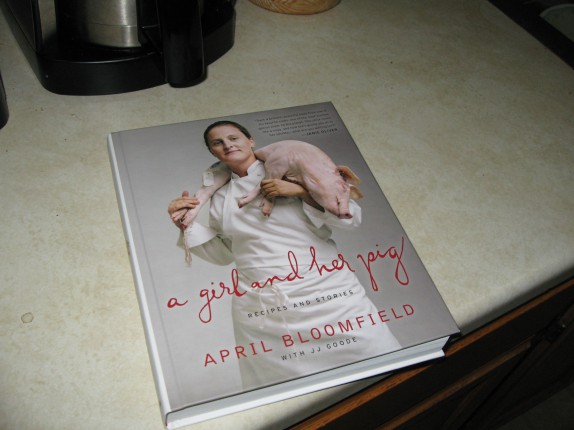



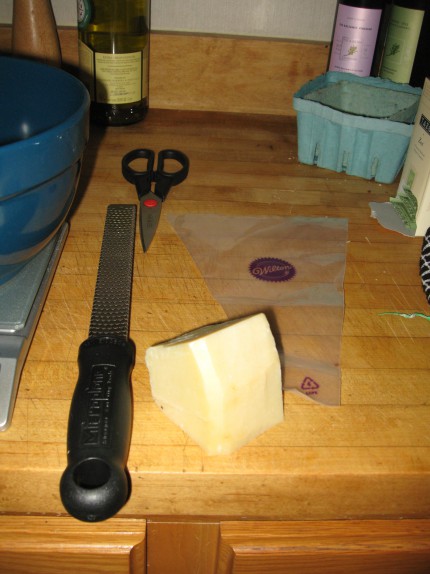
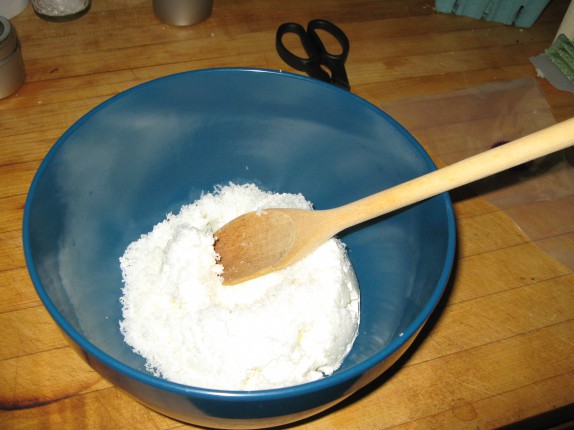
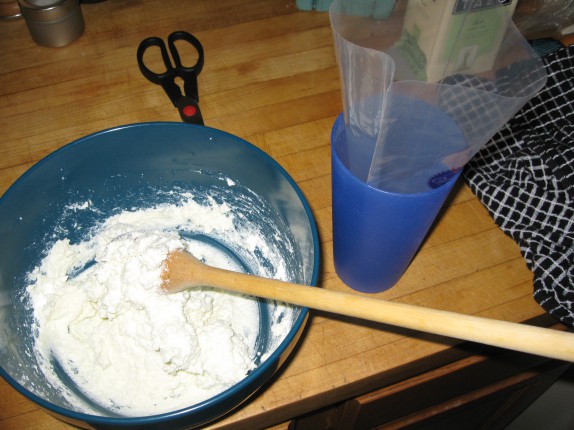

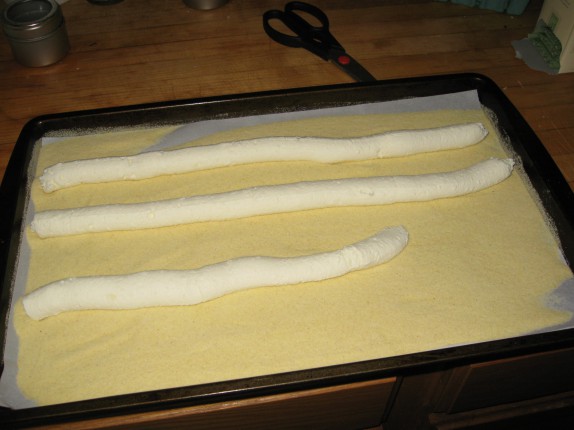
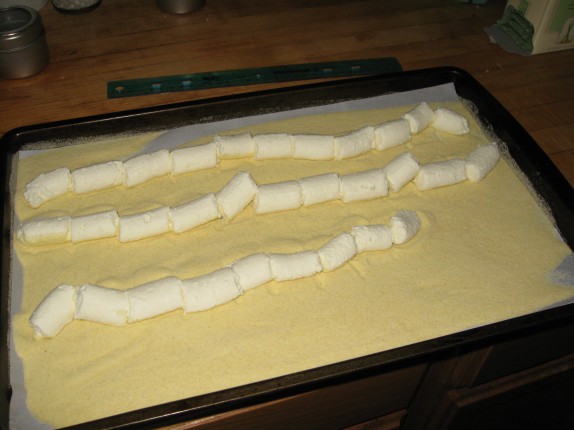
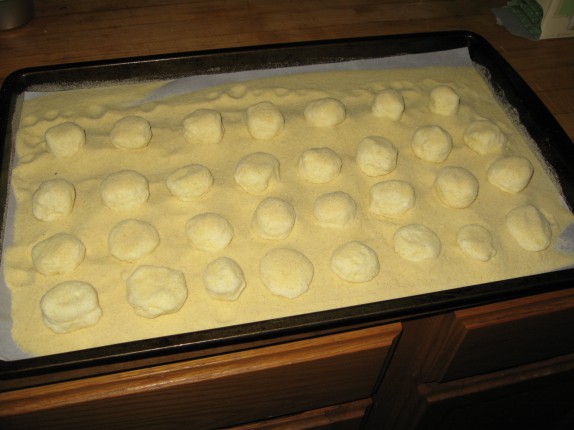

Advertisement